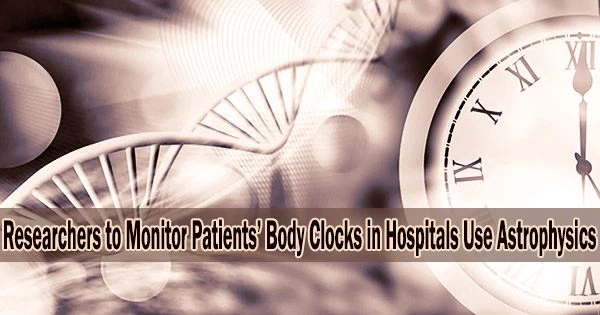In order to create a method of precisely measuring the human body clock in hospital patients, an interdisciplinary team of researchers lead by researchers from the University of Manchester modified a method initially created to evaluate data from stars.
The creation of the ClinCirc approach could one day assist physicians in identifying patients who are at risk for long-term health issues brought on by clock disturbance, which is known to be widespread among patients admitted to hospitals.
With the help of ClinCirc, the study concluded that body clock disruption is common in patients:
In half of the patients receiving intensive care, there were less blood clock oscillations. High inflammatory levels were linked to this.
Nearly all kidney transplant patients experienced a shift in body clock just after surgery, similar to jet lag.
Although it has been challenging to assess the body clock in individuals up until now, it is well known that it controls how animals respond to illness and whether they acquire disease. Shift work and jet lag are likely to throw off the clock, which may be why these activities are associated with disorders like obesity and diabetes.
The test devised by the team measures blood clock dysfunction in patients. This clock was altered in nearly all kidney transplant recipients (22 patients) and half of patients (13 patients) admitted to critical care.
The team, which includes researchers from Exeter University and Manchester University NHS foundation Trust, claims that it is too soon to determine the medical implications of their findings, but because they can precisely determine the body clock’s time, researchers can now examine clock dysfunction as a potential medical condition.
We have proved that ClinCirc is a robust method which can enable us to characterize the patient’s body clock from blood samples. Using this system, we show that for many patients admitted to hospital their body clock may be altered by disease or the treatment they receive.
Dr. John Blaikley
ClinCirc, which involves a series of blood tests over 24 to 48 hours, is described in a paper published in the Journal of Clinical Investigation.
ClinCirc combines two existing mathematical methods: the Lomb-Scargle periodogram and cosinor analysis to determine whether specific genes follow a regular cycle of increase and decrease over 24-hours.
The technique was subsequently applied by the researchers to measure the molecular oscillator, or “body clock,” in blood. One of the main mechanisms that powers many of the body clock outputs is this molecular oscillator.
The method was used to measure the body clock in 13 intensive care unit patients at Manchester Royal Infirmary and Wythenshawe hospital, some of whom had inflammation.
The body clocks of 22 kidney transplant patients who were given anti-inflammatory medications right away after surgery were also measured.
Dr. John Blaikley from The University of Manchester and senior author on the study said, “We have proved that ClinCirc is a robust method which can enable us to characterize the patient’s body clock from blood samples. Using this system, we show that for many patients admitted to hospital their body clock may be altered by disease or the treatment they receive.”
Peter Cunningham and Gareth Kitchen both from The University of Manchester who performed the analysis of blood samples said, “Other people have already shown that various hospital outcomes are affected by when they occur, therefore it will be interesting to see if this is linked by the alterations in the body clock described in this study.”
Professor Andrew Hazel, a mathematician based at The University of Manchester, developed and configured the ClinCirc mathematical method working with Callum Jackson, a Ph.D. student.
He said, “One of the great strengths of mathematics is that techniques originally developed for one application, in this case analysis of irregularly spaced astrophysical data, can be adapted to make progress in completely different areas of science.”
















